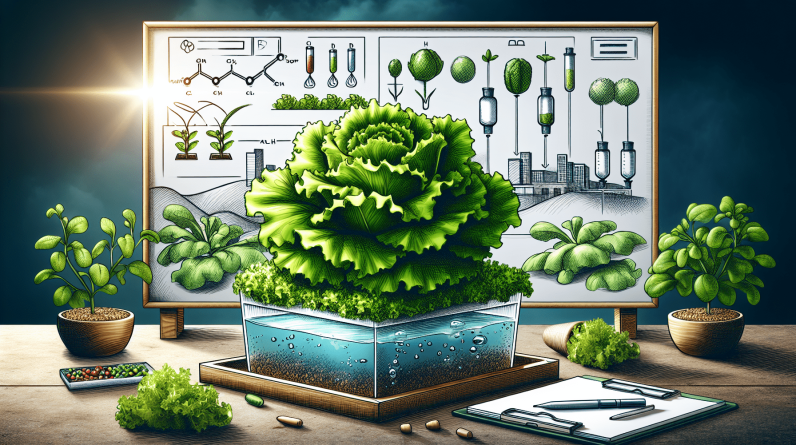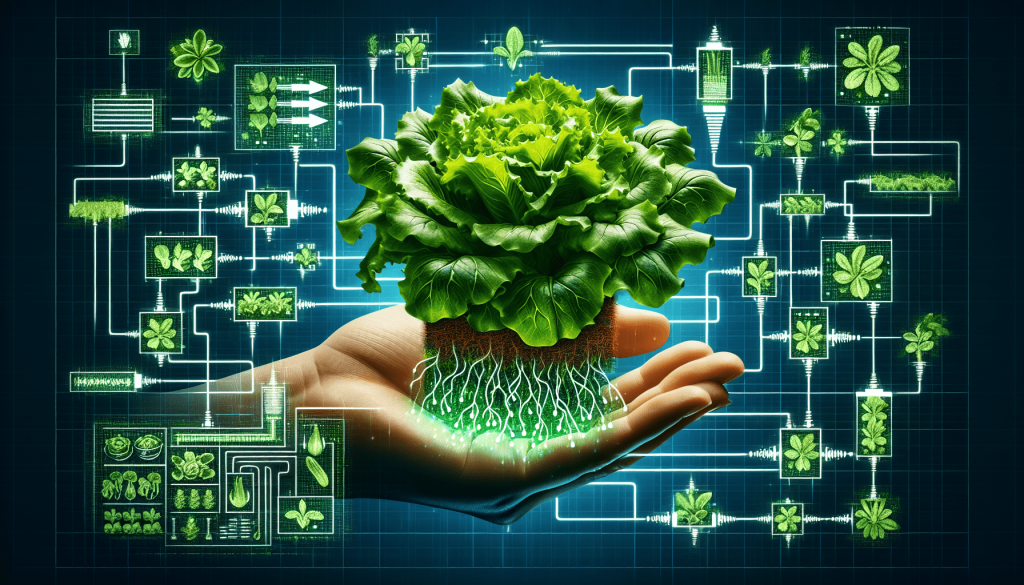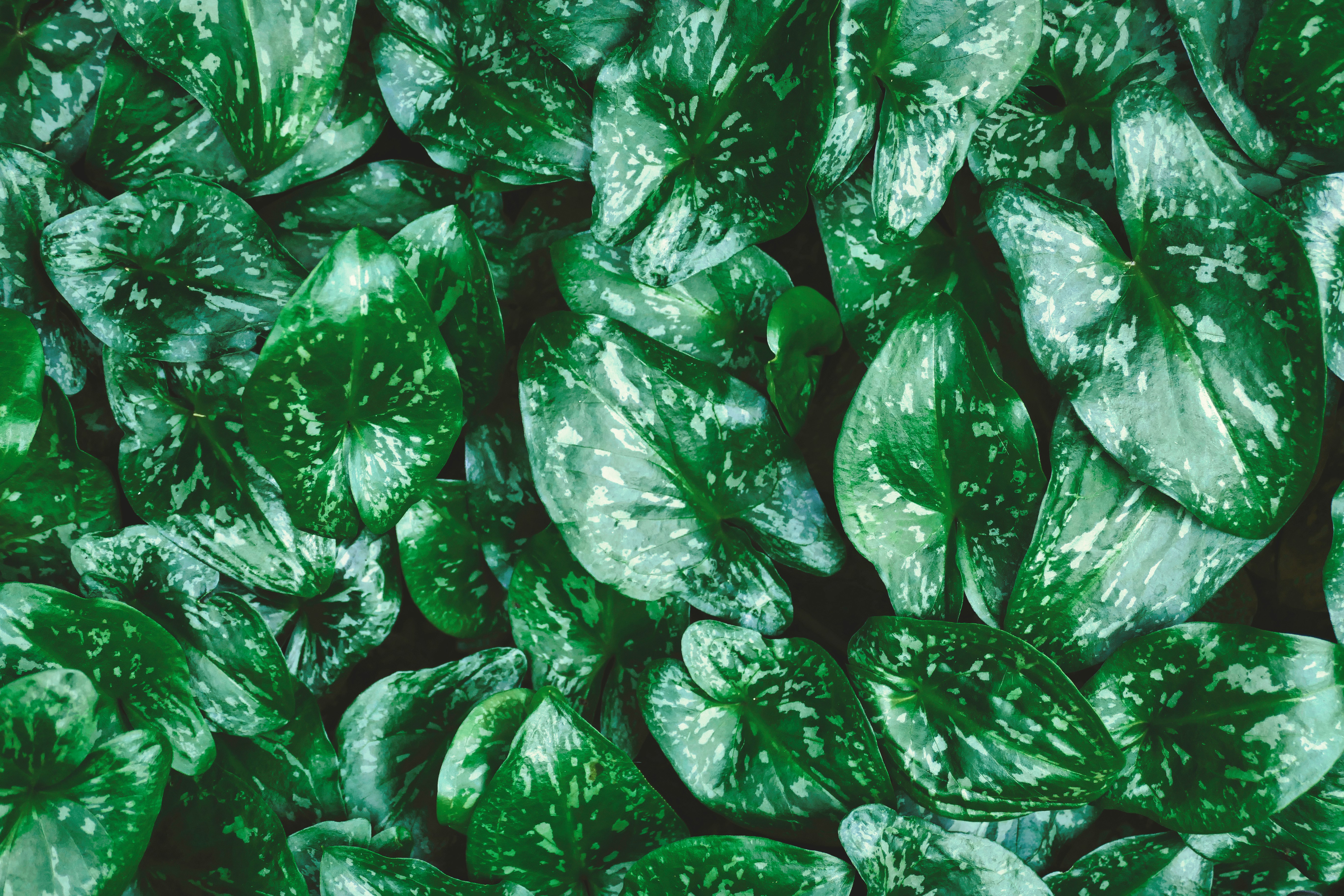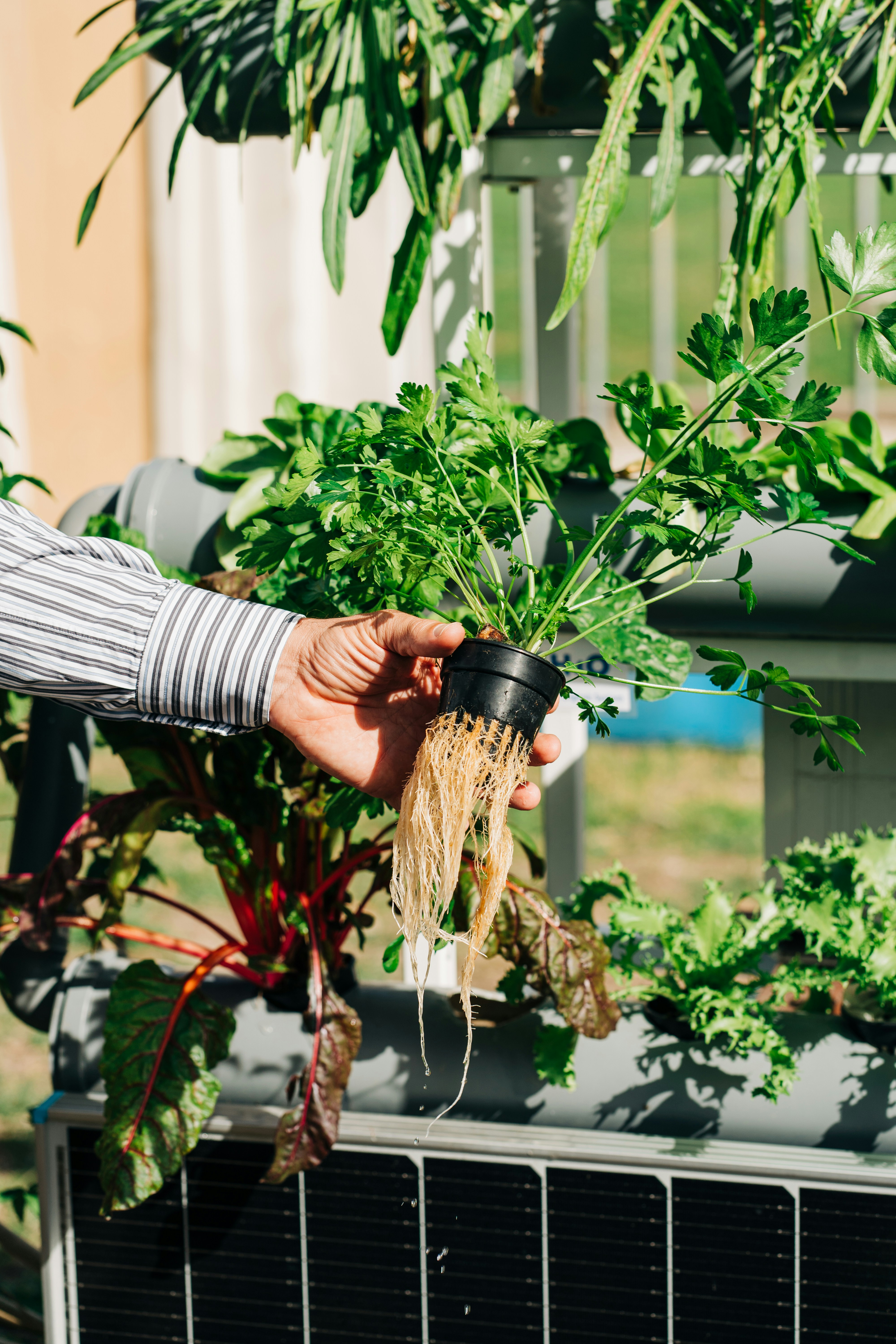
If you’re new to gardening and eager to try your hand at growing your own vegetables, hydroponic gardening might be the perfect option for you! Hydroponic systems offer a range of benefits that can help beginners easily cultivate fresh produce in a sustainable and efficient way. By providing essential nutrients directly to the roots without the need for soil, plants can grow faster and more abundantly. This method also conserves water, reduces the risk of soil-borne diseases, and allows for year-round cultivation, regardless of the weather outside. With the use of hydroponic vegetable gardening techniques, you can enjoy the satisfaction of growing your own delicious and nutritious crops with ease. Have you ever wanted to start your vegetable garden but were discouraged by the challenges of traditional soil-based gardening? Are you interested in exploring a more efficient and sustainable way to grow fresh produce at home? If so, hydroponic vegetable gardening might be the perfect solution for you. In this article, we will guide you through the basics of hydroponic gardening techniques for beginners, helping you kickstart your journey to growing your vegetables hydroponically.
Understanding Hydroponic Vegetable Gardening
Let’s start by unraveling the mystery behind hydroponic gardening. Hydroponics is a method of growing plants without using soil. Instead, plants are cultivated in a water-based, nutrient-rich solution that delivers essential minerals and elements directly to the roots. By bypassing the need for soil, hydroponic systems allow plants to absorb nutrients more efficiently and grow faster.
Benefits of Hydroponic Gardening
One of the key advantages of hydroponic vegetable gardening is its water-saving capabilities. Traditional soil-based gardening can be water-intensive, with up to 80-90% of water lost through evaporation and runoff. In contrast, hydroponic systems use significantly less water, as the nutrient solution is recirculated and reused within the system. This not only conserves water but also reduces the overall environmental impact of gardening.
Year-Round Cultivation
Another appealing aspect of hydroponic gardening is its ability to support year-round cultivation. Traditional gardening is often limited by seasonal changes and adverse weather conditions, making it challenging to grow certain crops throughout the year. With hydroponics, you can create an optimal growing environment for your plants, free from external factors that may hinder their growth. This means you can enjoy fresh, homegrown vegetables regardless of the time of year.

Setting Up Your Hydroponic System
Now that you understand the basics of hydroponic gardening let’s delve into setting up your hydroponic system. While it may seem daunting at first, rest assured that with the right guidance and preparation, you can create a thriving hydroponic garden in no time.
Choosing the Right System
Before you start building your hydroponic system, it’s essential to choose the right type that suits your needs and space constraints. There are various hydroponic systems available, ranging from simple setups like the Kratky method to more complex systems like nutrient film technique (NFT) or deep water culture (DWC). Consider factors such as the size of your space, the number of plants you want to grow, and your experience level when selecting a system.
Selecting the Vegetables to Grow
When deciding which vegetables to grow hydroponically, it’s crucial to choose plants that thrive in a soilless environment and are well-suited for hydroponic cultivation. Popular vegetables for hydroponic gardening include leafy greens like lettuce, spinach, and kale, as well as herbs like basil, cilantro, and parsley. These crops are relatively easy to grow hydroponically and can provide a bountiful harvest in a compact space.
Obtaining Essential Supplies
To set up your hydroponic system successfully, you will need to gather essential supplies such as a reservoir, nutrient solution, growing medium, lighting, and ventilation. These components are vital for creating an optimal growing environment that mimics the conditions of traditional gardening, ensuring that your plants receive the necessary light, nutrients, and air circulation to thrive.
Assembling Your Hydroponic System
Once you have all the necessary supplies, it’s time to assemble your hydroponic system. Follow the instructions provided with your system or refer to online tutorials for step-by-step guidance on setting up your reservoir, connecting the tubing, adding the nutrient solution, and adjusting the lighting and ventilation. Take your time to ensure each component is properly installed to avoid any issues once you start growing your vegetables.
Plant Care and Maintenance
After setting up your hydroponic system and planting your vegetables, it’s essential to understand how to care for your plants and maintain your system to ensure optimal growth and productivity.
Monitoring Nutrient Levels
One crucial aspect of hydroponic gardening is monitoring and maintaining proper nutrient levels in your system. Nutrient imbalances can lead to stunted growth, nutrient deficiencies, or nutrient toxicity in your plants. Invest in a reliable pH and TDS (total dissolved solids) meter to regularly check the nutrient solution’s pH levels and concentration. Adjust the nutrient solution as needed to keep your plants healthy and thriving.
Providing Adequate Lighting
Light is a crucial factor in plant growth, as it fuels photosynthesis and provides the energy plants need to produce food. If you’re growing your vegetables indoors, invest in high-quality LED grow lights that mimic natural sunlight and provide the necessary spectrum for plant growth. Position the lights at the correct distance from your plants to prevent burning or inadequate lighting, ensuring that your vegetables receive the right amount of light each day.
Preventing Pests and Diseases
One of the advantages of hydroponic gardening is its reduced risk of soil-borne diseases and pests. However, it’s still essential to take proactive measures to prevent common issues like fungal infections, aphids, or spider mites. Regularly inspect your plants for signs of pests or diseases, and consider using organic pest control methods like neem oil or predatory insects to protect your crops without harmful chemicals.
Pruning and Harvesting
As your vegetables grow, it’s crucial to prune and harvest them regularly to promote healthy growth and maintain productivity. Remove dead or yellowing leaves, trim overgrown branches, and harvest mature vegetables to encourage new growth and prevent overcrowding in your hydroponic system. Keep an eye on your plants’ progress and adjust your maintenance routine as needed to ensure a successful harvest.
Troubleshooting Common Issues
Despite your best efforts, you may encounter some challenges while growing vegetables hydroponically. Understanding common issues and how to address them will help you overcome obstacles and ensure the success of your hydroponic garden.
Root Rot
Root rot is a common problem in hydroponic systems caused by overwatering, poor oxygenation, or nutrient imbalances. Symptoms include wilting plants, foul odors, and discolored roots. To prevent root rot, ensure proper aeration in your reservoir, maintain optimal pH levels, and avoid waterlogged conditions. Consider using beneficial bacteria or hydrogen peroxide to combat root rot and protect your plants’ roots.
Nutrient Deficiencies
Nutrient deficiencies can occur if your plants are not receiving adequate nutrients in the hydroponic system. Common signs of nutrient deficiencies include yellowing leaves, stunted growth, or leaf curling. Regularly check your nutrient solution’s pH and TDS levels to ensure proper nutrient uptake by your plants. Adjust the nutrient solution composition or concentration to address specific deficiencies and provide your vegetables with the essential elements they need to thrive.
Algae Growth
Algae growth in your hydroponic system can occur due to excess light exposure, nutrient imbalances, or poor water quality. Algae can compete with your plants for nutrients and oxygen, leading to decreased growth and productivity. To prevent algae growth, cover your reservoir to reduce light exposure, maintain proper nutrient levels, and consider using an algae inhibitor or ultraviolet sterilizer to keep algae at bay. Regularly clean and sanitize your system to prevent algae buildup and ensure a healthy growing environment for your plants.
Temperature Fluctuations
Temperature fluctuations can impact plant growth and productivity in a hydroponic system, especially if the conditions are too hot or too cold. Plants may suffer from heat stress, wilting, or slowed growth in high temperatures, while cold temperatures can slow down metabolic processes and stunt growth. Maintain a consistent temperature range in your growing area by using fans, heaters, or cooling systems to regulate the environment and provide a comfortable setting for your plants to thrive.

Conclusion
Congratulations on embarking on your hydroponic vegetable gardening journey! By implementing the techniques and tips outlined in this article, you can create a thriving hydroponic garden and enjoy a bountiful harvest of fresh, homegrown vegetables. Remember to start small, experiment with different plants and systems, and remain patient as you learn and grow as a hydroponic gardener. With dedication and care, you can reap the rewards of hydroponic gardening and savor the satisfaction of growing your vegetables sustainably and efficiently. Happy gardening!












